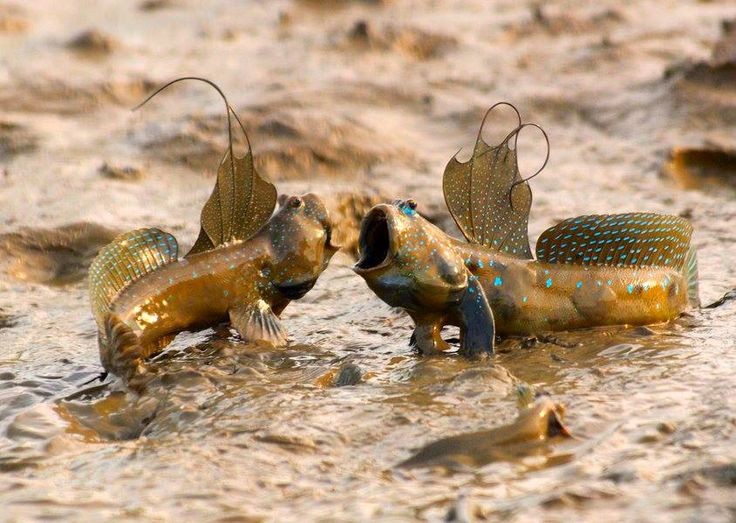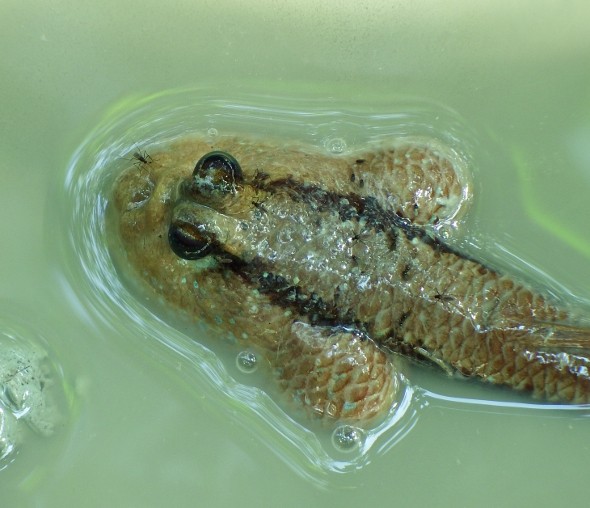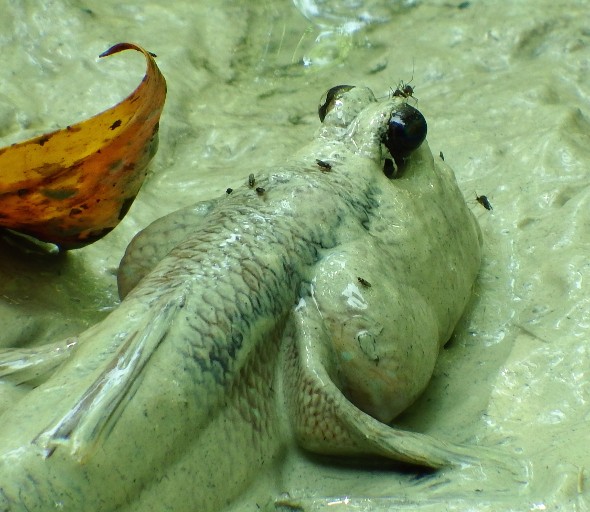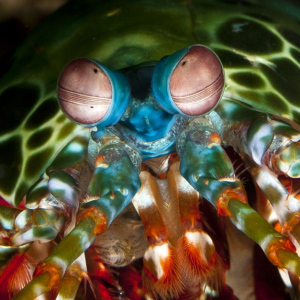That is the giant Mudskipper (Periophthalmodon schlosseri).
According to the English Encyclopedia Britannica, the giant mudskipper is one of the largest mudskippers in the world, belonging to the Gobiidae family. This fish species is widely distributed in the Indo-Pacific, from Africa to Polynesia and Australia. They are commonly found in tropical or subtropical habitats, but some species also live in temperate regions.
This species is identified by its light to dark brown body color, decorated with black stripes on each flank extending from the eye to the base of the tail.
Their preferred habitats are swamps, mangrove forests, or along mudflats in river mouths. They feast at low tide. Conversely, when the tide is high, the fish often retreat into their burrows to avoid becoming prey to their natural predators.
Great gifts for walking fish
The giant mudskipper’s unique ability is that it can jump out of the water, walk on mud, and climb tree roots. To do this, nature has given it wonderful gifts:
Their bodies are long and slender like torpedoes, less than 30 cm in size, with dorsal and pectoral fins. In particular, the pair of pectoral fins is very strong, helping them to easily walk on land to find prey. Their heads are large and have two pairs of very large eyes.
The eyes are mobile and retractable. Each eye can move independently of the other and has a wide field of vision. Mudskippers can see almost 360 degrees around them. They have excellent vision on land, but their vision underwater is not so good.
When their dorsal fins are raised, they signal to their mates that this feeding ground is ‘occupied’. However, disputes still occur.

Two giant mudskippers raised their fins, preparing to fight and defend their sovereignty.
Like other fish, giant mudskippers breathe through gills. When the mudskipper comes to land, it closes its gill chambers, trapping water and air inside these chambers. Therefore, the gills can continue to function because if the gills dry out, they will stick together and can no longer absorb oxygen. The gill chambers expand for maximum oxygen absorption, often making the animal look like it has puffy cheeks.
Giant mudskippers have other ways of breathing on land besides using gills. They also absorb oxygen through their skin, mouth and throat. Their skin must be moist. Mudskippers generally need a moist environment to survive on land or must periodically return to water or roll in mud to keep their bodies moist.
This breathing mechanism helps them survive well on land – an unimaginable ability for this fish
Giant mudskippers feed mainly on invertebrates in the intertidal zone. An aggressive hunter, they love to eat crabs, shrimps, worms and insects. They can even eat smaller mudskippers, Ecologyasia reports. Low tide is when giant mudskippers walk around looking for food.
However, when on land, they face a rare problem in the fish world: They are bitten by mosquitoes.
In a documentary about giant mudskippers, VTV2 commented that giant mudskippers are probably the only fish in the world that mosquitoes bite. Mosquitoes in forests and estuaries love to suck the blood of this fish, especially its head.

Even underwater…

Or on land, hungry mosquitoes still do not spare giant mudskippers.
So what do they do to avoid this nuisance?
When mosquitoes concentrate on biting the head (when they walk to forage), the giant mudskipper wriggles its body to ward off the mosquitoes or buries its body in mud to avoid mosquitoes.
Sometimes, they are forced to go into the water to avoid hungry mosquitoes.
Even so, the bloodthirsty mosquitoes still did not let go of the mudskipper. They just find gaps in the mudskipper’s stomach to suck blood.





